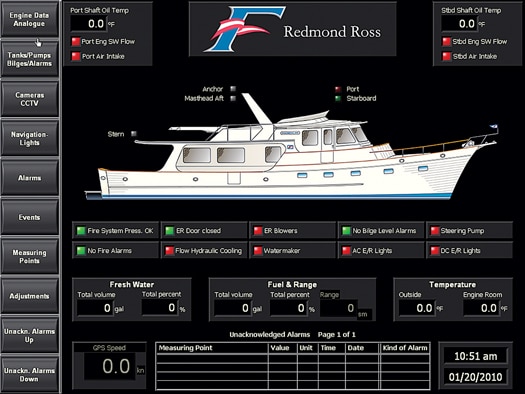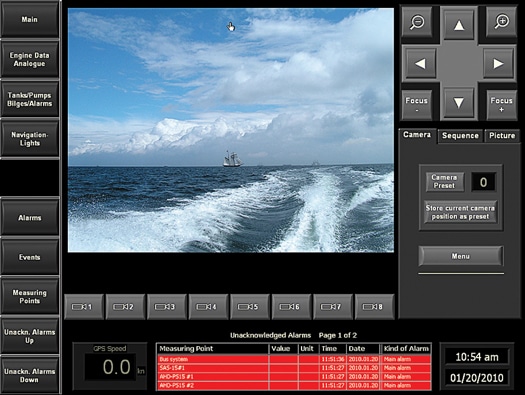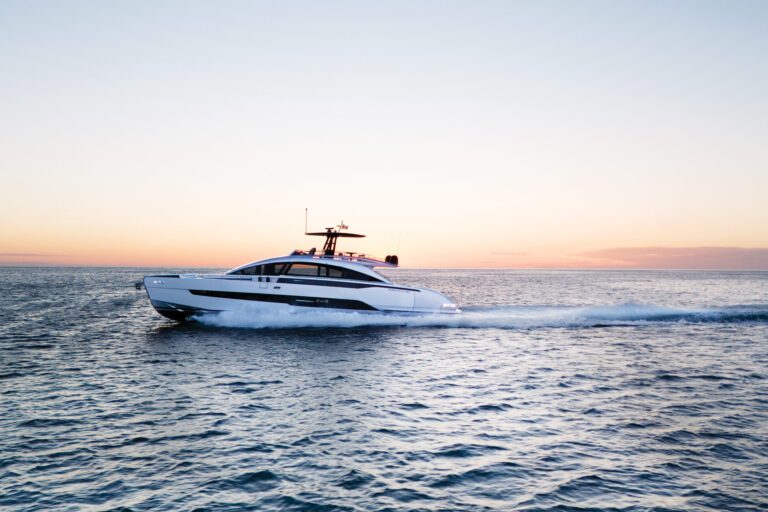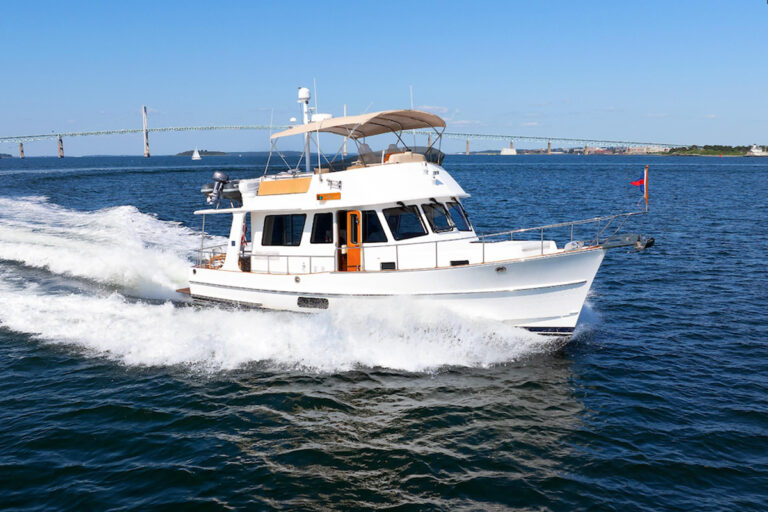
Watch and Learn
Years ago I spent several unexpected days aboard an 1,100-foot supertanker after being rescued at sea halfway between Norfolk and Bermuda. After I dried out, contacted home, and got a hot meal, I was given a tour of this behemoth ship by one of its crew. What impressed me most were the sophisticated systems that provided the crew of only 14 with the status of every electrical and mechanical system on board. Instant access to all this information made it possible for a relatively small number of crew to operate this huge ship safely as it worked its way around the world.
Today, much of this advanced technology has found its way into recreational boats. A number of companies that design elaborate systems for commercial vessels now offer systems for today’s yachts, and the amount of information available to the owner is mind-boggling.
The need for comprehensive monitoring systems has been magnified by the increasing complexity of today’s yachts. It is not uncommon for a modest-sized boat to have four different power systems—240V AC, 120V AC, 24V DC, and 12V DC. The management of all this power can become overwhelmingly confusing Today’s yachts are utilizing multiple generators, alternators, inverters, isolation transformers, DC-DC converters and more as they feed an ever-growing list of accessory equipment.
Also driving the need for information is the growing trend of owners to voyage to far-distant shores, beyond the reach of service facilities or rescue crews. The safety and comfort of these intrepid voyagers depend on their ability to monitor the status of their vessel’s engines, fuel and water levels, and onboard electrical and mechanical systems.
Recently, I was introduced to a new monitoring system installed on Tony Fleming’s personal Fleming 65, Venture II. I had a special interest in learning more about this system, as I will soon be joining Fleming on a voyage from Western Scotland to Iceland. Designed and manufactured by Böning Automationstechnology, a German company specializing in monitoring and automation devices for the shipping industry, the system provides Fleming with a wealth of information.
Working together, the Fleming yard and Böning engineers developed a system that is now available on Fleming’s production models, and it is a good example of how companies are applying this advanced technology to modern yachts. These modular systems allow owners to choose how much information to display and whether to control certain systems and not just monitor them.

| | |
The Böning system used by Fleming is centered around its “Main Page,” typically displayed on a 15- inch touchscreen monitor, although smaller monitors are available. At a glance, the captain can determine if everything is ready to go to sea, much like an airline pilot before takeoff. If something is not right, such as the flow of cooling water for the hydraulic system, a red indicator light and message will appear.
To make it easier to absorb so much information, additional pages have been created and categorized. The “DC Electrical Systems” page, accessible from the main page, shows the status of DC power sources, current flows, and charge status of all batteries. The “AC Electrical Systems” page shows the status of the vessel’s seven AC power sources. Knowing how many amps are being drawn from each source avoids overload conditions. Special indicators show if the isolation transformers are needed to boost available shorepower, and alarms will sound if voltage or frequency values are outside acceptable parameters.
“It’s so easy to push that [touchscreen] and see what the alternators are putting out or see how much juice you’re using at anchor at night,” says Captain Chris Conklin, who skippers Venture II. “It gives you much more of a broad picture.”
This system not only monitors nav and anchor lights, it is also used to activate them. Being able to see if all lights are functioning from the pilothouse reduces the risk of running with a light burned out. While vessel monitoring offers quick-glance access to information, it should not become a substitute for firsthand checks of vital systems.
“There are a few things that we could only check by going into the engineroom that now we can just check on the screen,” says Conklin. “That might not be a good thing, if you get down in the engineroom less often, but it certainly is a good thing to be able to look right at that moment and switch between pages and know how everything’s going. We run fairly short-handed on the boat. If you’ve got one person on watch at night, you can keep an eye on things.” The system reinforces safe operation: To prevent an engineroom fire from spreading, an advisory alarm will engage if the engineroom door is open while underway.
Discovering a yacht’s fuel or water supply has run out can quickly ruin the best of cruises, so the “Tanks & Pumps” page is vital. Each tank has two alarm levels, one set to low and one to empty. Monitoring the ship’s fresh water flow can indicate a faucet accidentally left on.
A favorite feature has proven to be the CCTV system that allows up to eight color cameras to be installed throughout the yacht. With pan, tilt, and zoom controls and the ability to integrate FLIR’s night-vision cameras, the captain can make a quick visual check of all areas, inside and out.
The value of these sophisticated systems is obvious, but perhaps the most difficult challenge is knowing when “enough is enough.” While they are greatly helpful, they also add to the complexity of an already complex yacht. A good dose of moderation and common sense also needs to be applied if the goals of improving safety and convenience are to be achieved.
For more information, visit www.boening.com. Editor’s Note: Böning’s website uses the Anglicized spelling of the company name: Boening.





